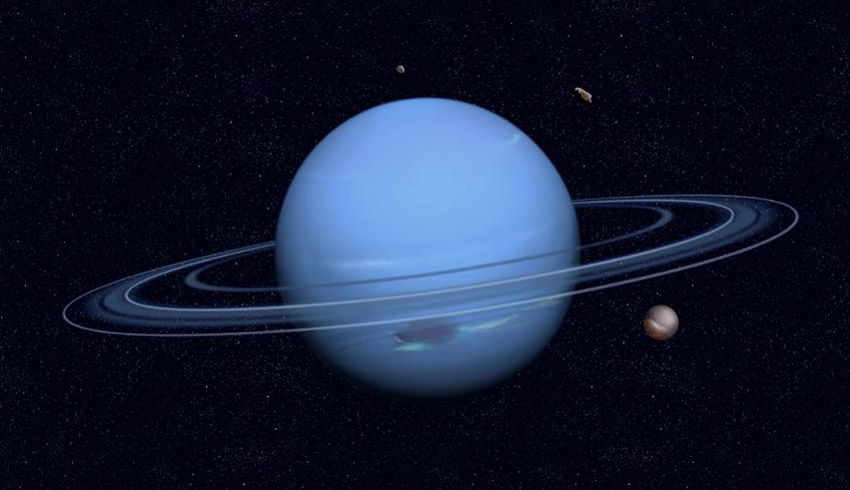By applying the technique to models based upon known exoplanets with clouds, the team has demonstrated in principle that high resolution spectroscopy can be used to examine the atmospheres of exoplanets that were previously too difficult to characterise due to clouds that are too dense for sufficient light to pass through.
Their technique is described in a paper for the Monthly Notices of the Royal Astronomical Society and provides another method for detecting the presence of water vapour in an exoplanet’s atmosphere – as well as other chemical species that could be used in future to assess potential signs of life. The research received funding from the Science and Technologies Facilities Council (STFC), part of UK Research and Innovation (UKRI).
Astronomers use light from a planet’s host star to learn what its atmosphere is composed of. As the planet passes in front of the star they observe the transmission of the stellar light as it skims through the upper atmosphere and alters its spectrum.
They can then analyse this spectrum to look at wavelengths that have spectral signatures for specific chemicals. These chemicals, such as water vapour, methane and ammonia, are only present in trace quantities in these hydrogen and helium rich planets.
Lead author Dr Siddharth Gandhi of the Department of Physics at the University of Warwick said, "We have been investigating whether ground-based high resolution spectroscopy can help us to constrain the altitude in the atmosphere where we have clouds, and constrain chemical abundances despite those clouds."
However, dense clouds can block that light from passing through the atmosphere, leaving astronomers with a featureless spectrum. High resolution spectroscopy is a relatively recent technique that is being used in ground-based observatories to observe exoplanets in greater detail, and the Warwick researchers wanted to explore whether this technology could be used to detect the trace chemicals present in the thin atmospheric layer right above those clouds.
While astronomers have been able to characterise the atmospheres of many larger and hotter exoplanets that orbit close to their stars, termed ‘hot Jupiters’, smaller exoplanets are now being discovered at cooler temperatures (less than 700 degrees).
Many of these planets, which are the size of Neptune or smaller, have shown much thicker cloud.
"What we are seeing is that a lot of these planets have got water vapour on them, and we’re starting to see other chemicals as well, but the clouds are preventing us from seeing these molecules clearly. We need a way to detect these species and high resolution spectroscopy is a potential way of doing that, even if there is a cloudy atmosphere," Professor Gandhi explained.
They modelled two previously known ‘warm Neptunes’ and simulated how the light from their star would be detected by a high resolution spectrograph. GJ3470b is a cloudy planet that astronomers had previously been able to characterise, while GJ436b has been harder to characterise due to a much thicker cloud layer.
Both simulations demonstrated that at high resolution you can detect chemicals such as water vapour, ammonia and methane easily with just a few nights of observations with a ground-based telescope.
The technique works differently from the method recently used to detect phosphine on Venus, but could potentially be used to search for any type of molecule in the clouds of a planet outside of our solar system, including phosphine.
The majority of observations of exoplanets have been done using space-based telescopes such as Hubble or Spitzer, and their resolution is too low to detect sufficient signal from above the clouds. High resolution spectroscopy’s advantage is that it is capable of probing a wider range of altitudes.
Co-author Dr Matteo Brogi, from the University of Warwick Department of Physics, added, "Despite planets with intermediate size between the Earth and Neptune being the most common in our Galaxy, our solar system does not host any of them. Being able to determine the nature of these exoplanets allows us to better place our solar system in context, which brings us one step closer to unraveling the mystery of our origins."

